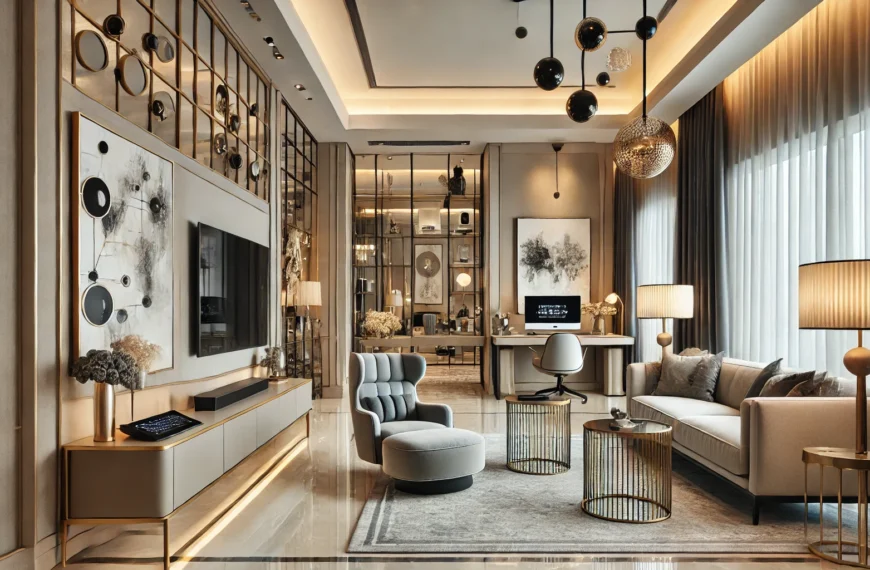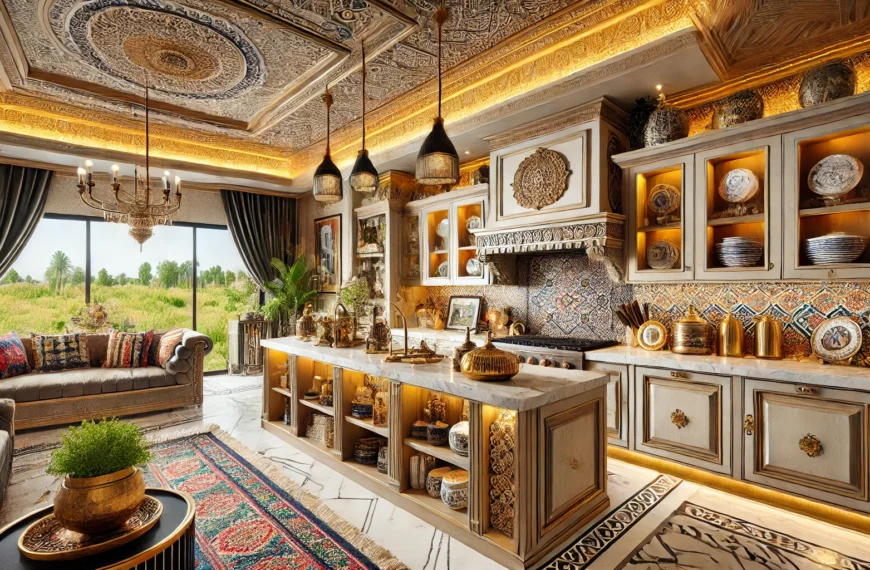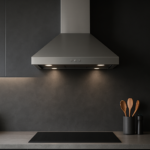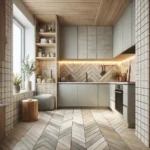Home décor trends are constantly evolving, offering fresh ideas to transform living spaces into stylish and functional environments. As we step into 2025, modern home décor trends are all about blending aesthetics with functionality. Whether you’re looking to revamp your living room, home office, or bedroom, embracing the latest design ideas can help create a space that reflects your personality and meets your lifestyle needs. From luxury home décor ideas to smart home solutions and contemporary styles, there’s something for everyone. In this article, we’ll explore the top modern home décor trends for 2025, offering insights into key elements such as lighting, furniture, and room-specific designs to help you achieve a chic and inviting home.
Top Modern Home Décor Trends for 2025
1. Luxury Home Décor Ideas
Luxury home décor ideas continues to captivate homeowners who seek sophistication and elegance. In 2025, luxury décor focuses on:
- Premium Materials: Marble, brass, and velvet to add a touch of opulence.
- Minimalist Elegance: Clean lines and uncluttered spaces with high-end finishes.
- Statement Pieces: Oversized artwork, designer furniture, and bespoke installations.
- Personalized Touches: Custom-designed elements that reflect individual style.
2. Smart Home Décor
Integrating smart technology into home décor enhances both convenience and aesthetics. Key smart home décor trends include:
- Smart Lighting: Adjustable LED lighting to create mood-enhancing atmospheres.
- Automated Furniture: Motorized curtains and height-adjustable desks.
- Voice-Activated Controls: Seamless integration with smart home assistants.
- Energy Efficiency: Sustainable smart solutions to reduce energy consumption.
3. Wall Décor Ideas for Living Room
Wall décor plays a crucial role in defining the ambiance of a living room. Popular wall décor ideas for 2025 include:
- Textured Wallpapers: Bold patterns and 3D textures to create visual interest.
- Gallery Walls: A curated collection of artwork, photos, and wall sculptures.
- Floating Shelves: Stylish storage solutions that double as decorative elements.
- Accent Walls: Contrasting colors and materials to make a striking statement.
4. Best Furniture for Home Office
As remote work continues to rise, designing a functional home office is essential. The best furniture for home offices in 2025 features:
- Ergonomic Designs: Adjustable chairs and desks to promote comfort and productivity.
- Multi-Functional Pieces: Storage-integrated desks and modular seating.
- Aesthetic Appeal: Sleek, modern designs that complement the overall home décor.
- Space-Saving Solutions: Foldable desks and wall-mounted storage units.
5. Vintage Home Décor
Vintage home décor is making a strong comeback, blending nostalgia with modern elements. Key vintage trends include:
- Retro Color Palettes: Muted tones with pops of vibrant colors.
- Antique Furniture: Restored mid-century and Victorian pieces.
- Eclectic Mix: Combining old-world charm with contemporary accents.
- Sustainable Choices: Upcycled materials and thrifted finds.
6. Home Lighting Design Ideas
Lighting plays a pivotal role in home décor, enhancing ambiance and functionality. Trending home lighting design ideas include:
- Layered Lighting: A combination of job, accent, and ambient lighting.
- Statement Fixtures: Bold chandeliers and artistic pendant lights.
- Smart Lighting Systems: Customizable settings for different moods.
- Energy-Efficient Solutions: LED fixtures and solar-powered lights.
7. Home Décor Styles for 2025
The evolving home décor styles for 2025 focus on personalization and adaptability. Popular styles include:
- Contemporary: Sleek designs with a focus on comfort and practicality.
- Minimalist: Clean, uncluttered spaces with a neutral color palette.
- Eclectic: A blend of different styles and eras for a unique look.
- Biophilic Design: Incorporating nature-inspired elements and greenery.
8. Contemporary Home Décor
Contemporary home décor remains a timeless choice, adapting to current trends while maintaining a sleek appearance. Essential elements include:
- Neutral Color Schemes: Whites, grays, and earthy tones.
- Functional Spaces: Open floor plans and multi-purpose furniture.
- Artistic Accents: Abstract art and sculptural pieces.
- Sustainable Materials: Eco-friendly fabrics and finishes.
9. Luxury Furniture for Home
Investing in luxury furniture can instantly elevate the look of any space. Trending luxury furniture styles include:
- Designer Sofas: Plush seating with high-quality upholstery.
- Statement Coffee Tables: Unique shapes and premium materials.
- Bespoke Pieces: Tailor-made furniture that reflects personal taste.
- Modular Designs: Flexible layouts for customizable spaces.
10. Room Décor Ideas for Small Homes
Decorating small homes requires creativity and smart space utilization. Effective room décor ideas include:
- Multipurpose Furniture: Sofa beds and extendable dining tables.
- Vertical Storage: Utilizing wall space for shelves and cabinets.
- Light Color Palette: Creating an illusion of a larger space.
- Mirrors and Glass: Reflective surfaces to enhance openness.
11. Scandinavian Interior Design Ideas
Scandinavian interior design remains a popular choice for its simplicity and functionality. Key elements include:
- Natural Materials: Wood, wool, and stone.
- Muted Color Tones: Soft, neutral hues with occasional pops of color.
- Minimalistic Approach: Focus on essentials with clean lines.
- Cozy Textures: Layering fabrics for warmth and comfort.
Conclusion
Embracing modern home décor trends in 2025 allows homeowners to create stylish, functional, and personalized living spaces. Whether incorporating luxury elements, smart technology, or vintage aesthetics, there’s a wealth of design options to explore. Focus on balancing aesthetics with practicality to craft a home that reflects your personality while staying on trend.
FAQs
1. What are the top modern home décor trends for 2025? The top trends include luxury décor, smart home features, contemporary styles, and eco-friendly designs.
2. How can I incorporate smart home décor into my space? You can use smart lighting, automated furniture, and voice-activated systems to enhance convenience and style.
3. What are some affordable ways to achieve a luxury home look? Focus on statement pieces, premium finishes, and minimalist designs to create a luxurious ambiance on a budget.
4. Which home décor style is best for small spaces? Scandinavian and minimalist styles work well for small spaces, offering functionality and aesthetic appeal.










